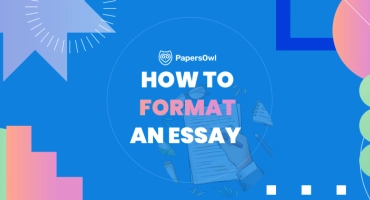Guide to Research Paper Format – Sections, Styles, and More
Table of contents
Writing research papers is a key part of your studies. They develop your critical thinking skills and show an understanding of complex topics.
The formatting of a research paper changes based on the style guide you follow. Most research papers use APA style guidelines for citations, font selection, page layout, headings, and reference pages, with less use of other styles.
This article will be useful to all academic levels be it students, researchers, or professionals. You will gain unique skills in writing research papers that stand out. Now, let’s start to explore how to format research papers!
Choose the Correct Style for Your Research Paper
At the very beginning of writing a research paper, it is important to choose the right format. The style you choose, with the support of research paper writing service, will definitely affect how you present your work and how it will be accepted in the academic environment.
Different academic fields often prefer specific styles that best fit their methods and standards. Below, you will find a table that highlights the main features of the most used styles in formatting research papers. This will help you decide which style meets your needs.
| Feature/Style | AMA | APA | Chicago | MLA |
| Specific Subjects | Medical & Health Sciences | Psychology, Education & Social Sciences | History, Arts & Humanities | Literature, Arts & Humanities |
| Citation Guidelines | The AMA Manual of Style (11th edition | Publication Manual of the American Psychological Association (7th edition) | The Chicago Manual of Style (17th edition) | The MLA Handbook for Writers of Research Papers (9th edition) |
| Margins | 1 inch all around | 1 inch all around | 1 inch all around | 1 inch all around |
| Title Page | Required | Required | Optional | No separate title page |
| Identifying Information | Top of the title page | Top of the title page | Top or bottom of the page | Upper left-hand corner of the first page |
| Abstract | Structured | Required for most papers | Not commonly required | Not typically required |
| Header & Footer | Running head & page number | Running head (shortened title) & page number | Page number (no running head) | Right-aligned page number |
| Pagination | Top right | Top right | Top right or bottom center | Top right or bottom center |
| Section Headings | Numbered, not bolded | Varies by level, both numbered and bolded | Not specific (can be numbered or lettered) | No specific standard |
| Tables, Graphs & Images | Numbered sequentially | Labeled with “Table” or “Figure” and numbered | Numbered and titled | Labelled ‘Table’ or ‘Figure’ and numbered |
| References/Citations | Listed numerically at the end | Alphabetical order by author’s last name | Alphabetical order or order of appearance | Alphabetical order by author’s last name |
Note that the font doesn’t always have to be Times New Roman. However, if it is, the font size has to be always 12.
Remember, these are basic guidelines, and the specifications can vary depending on the version of the style guide or specific journal/departmental preferences. It’s always best to consult the latest edition of the respective style manual for detailed and accurate formatting instructions.
- Free unlimited checks
- All common file formats
- Accurate results
- Intuitive interface

Research Paper Format Styles
Research paper format means the reference style used in an academic paper or publication. The most common formats include: APA (American Psychological Association), MLA (Modern Language Association), Chicago, AMA (American Medical Association), ASA, and Turabian. Which format you choose will depend on the subject area and the preferences of your teacher.
Writing research papers can be so tough that some students might decide to buy a research paper to help achieve academic success.
Here are some guidelines and examples of popular research paper formats:
APA Style Formatting
APA style, which stands for the American Psychological Association format, has specific guidelines for research papers. The main requirements are:
- Use Times New Roman font size 12 or Arial font size 11
- Set 1-inch page margins
- Apply double-line spacing
- Capitalize major words (upper and lower case)
- Indent every new paragraph by ½ inch
- Include a running head on each page if submitting for publication
The paper title page for APA papers must contain a page number, paper title, institutional affiliation, instructor’s name, and submission date. The key components of the APA style citation:
- The author’s name and publication date are in-text and on the reference list page
- The reference source determines how the reference page must be written
- Irrespective of the reference source, the referenced source must be italicized
- For online sources, the website link must be stated
- For journal and textbook citations, the author’s name is written first, the date of publication in brackets, the source title, and the reference page must be included.
Most APA paper formats include a cover page, abstract, introduction, background, methodology and result, conclusion, and appendices.
You will mostly be required to use this style if you major in psychology or another social sciences discipline.
Title page
The title page for APA papers must contain a page number, paper title, institutional affiliation, instructor’s name, and submission date.
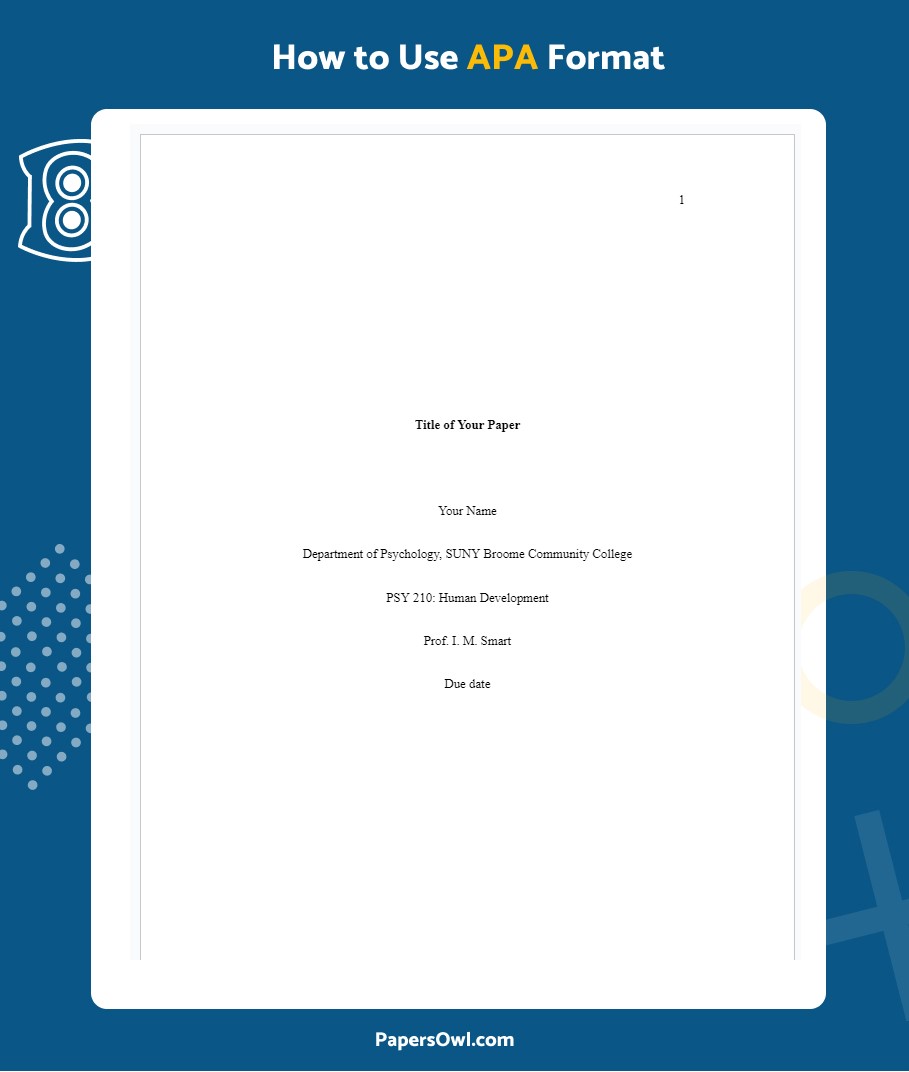
Running head
For papers submitted for publication, APA requires a running head on each page. This running head should be a shortened version of your paper’s title.
Headings
APA provides guidelines for formatting up to five levels of headings within your paper. Level 1 headings are the most general, and level 5 headings are the most specific.
Reference page
APA style citation requires (author-date) in-text citations throughout the text and an APA style reference page at the end. The format of reference entries depends on the source type:
- The author’s name and publication date must be included.
- Italicize the title of the referenced source.
- For online sources, include the website link.
- For journal and textbook citations, list the author’s name first, the date of publication in brackets, the source title, and the reference page.
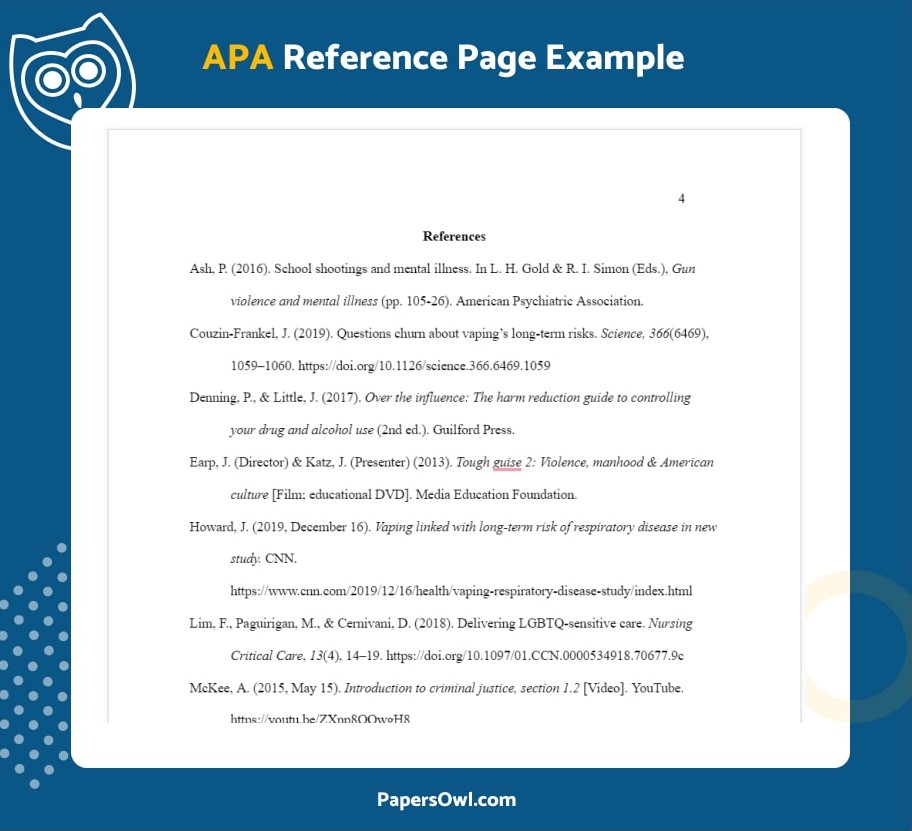
Most APA paper formats include a cover page, abstract, introduction, background, methodology and results, conclusion, and appendices. You will mostly use this style if you major in psychology or another social sciences discipline.
MLA Style Format: Useful Guideline for Humanities
Unlike the APA research paper format, which is often used in the social sciences, the MLA style is primarily used for papers in the arts and humanities. MLA format emphasizes simplicity and readability, making it a preferred choice for literature, language, and other humanities subjects.
Key guidelines for writing an MLA style paper:
- Use a readable font like 12 pt Times New Roman.
- Set 1-inch margins on all sides.
- Apply double line spacing throughout the paper.
- Indent each new paragraph ½ inch.
- Use title case capitalization for major words.
First Page Details
The first page of an MLA paper must include a heading with the following information:
- Your full name
- Your instructor’s name
- The course name
- The submission date
Page Header
Each page must have a header at the top right corner that includes your last name and the page number.
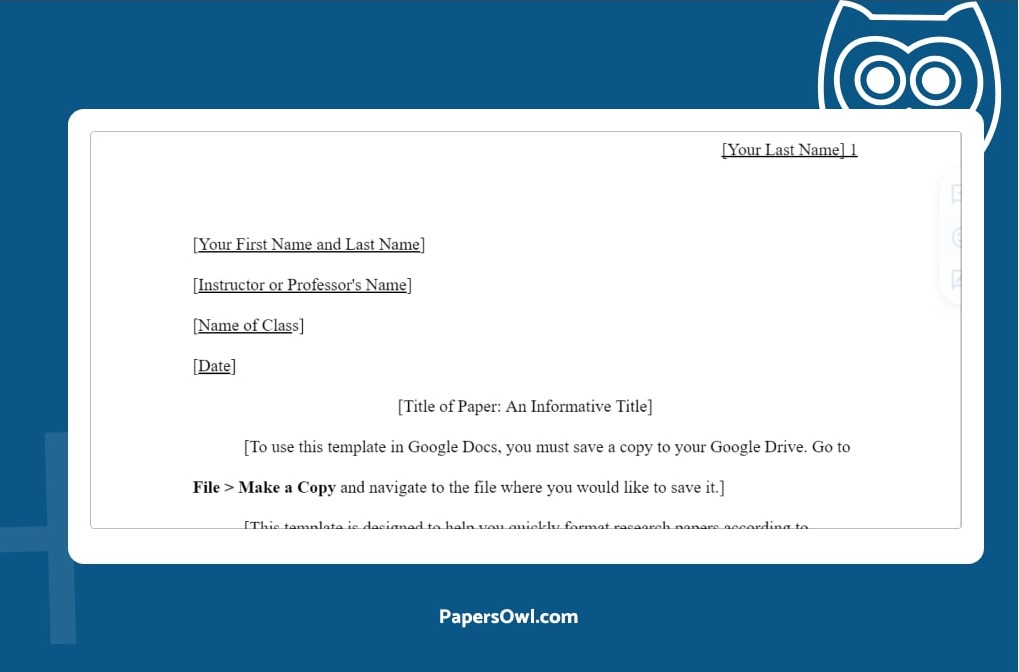
Works Cited Page
The MLA style requires a Works Cited page at the end of your paper, listing all referenced sources. This page should:
- Be double-spaced
- Use a 0.5-inch hanging indent for each entry
- List entries alphabetically by the author’s last name
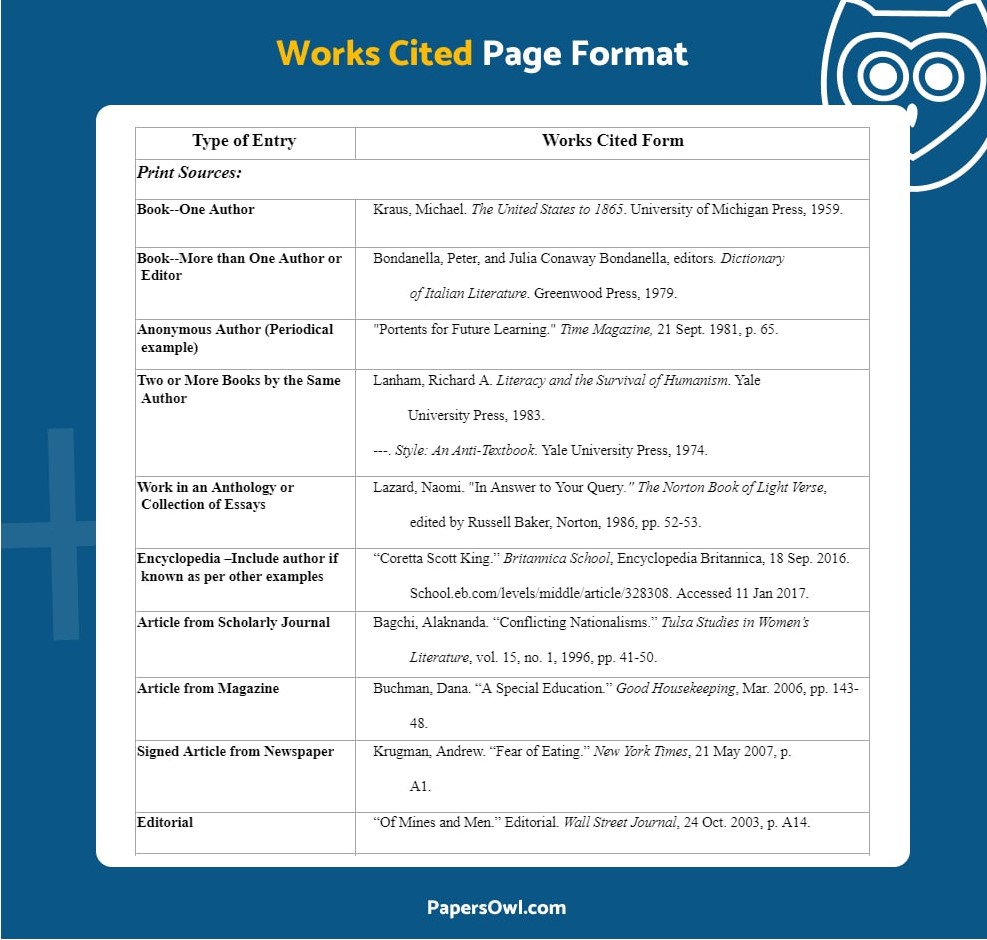
Other Important Points:
- The first page must include key information like your full name, supervisor’s name, institutional affiliation, course name, and submission date.
- Each new paragraph must be indented ½ inch.
- Use in-text citations wherever a source is referenced.
- MLA formatting style requires a Works Cited page at the end of your project. This page contains a list of all referenced sources, and works cited. It features a 0.5-inch hanging indent and is formatted with double-spaced lines.
The work cited page differs from the closely related bibliography reference page layout. While a bibliography page displays sources consulted to gain in-depth knowledge, the work cited page displays all cited pages.
MLA style ensures that your research paper is well-structured and properly cited, which is crucial for academic success. Always consult your MLA handbook for more examples and detailed guidelines.
Chicago Formatting Style
The Chicago formatting standard is unique and widely used in many academic disciplines. Here are the main guidelines for writing a paper in Chicago style:
- Use a standard font like 12 pt Times New Roman.
- Set 1-inch margins on all sides.
- Apply double-line spacing.
- Indent each new paragraph ½ inch.
- Place page numbers either at the bottom center or the top right corner of each page.
Title Page
Chicago style does not typically require a title page. However, if you choose to include one, follow these guidelines:
- Place the title about one-third of the way down the page.
- Include your name, course information, and submission date further down the page.
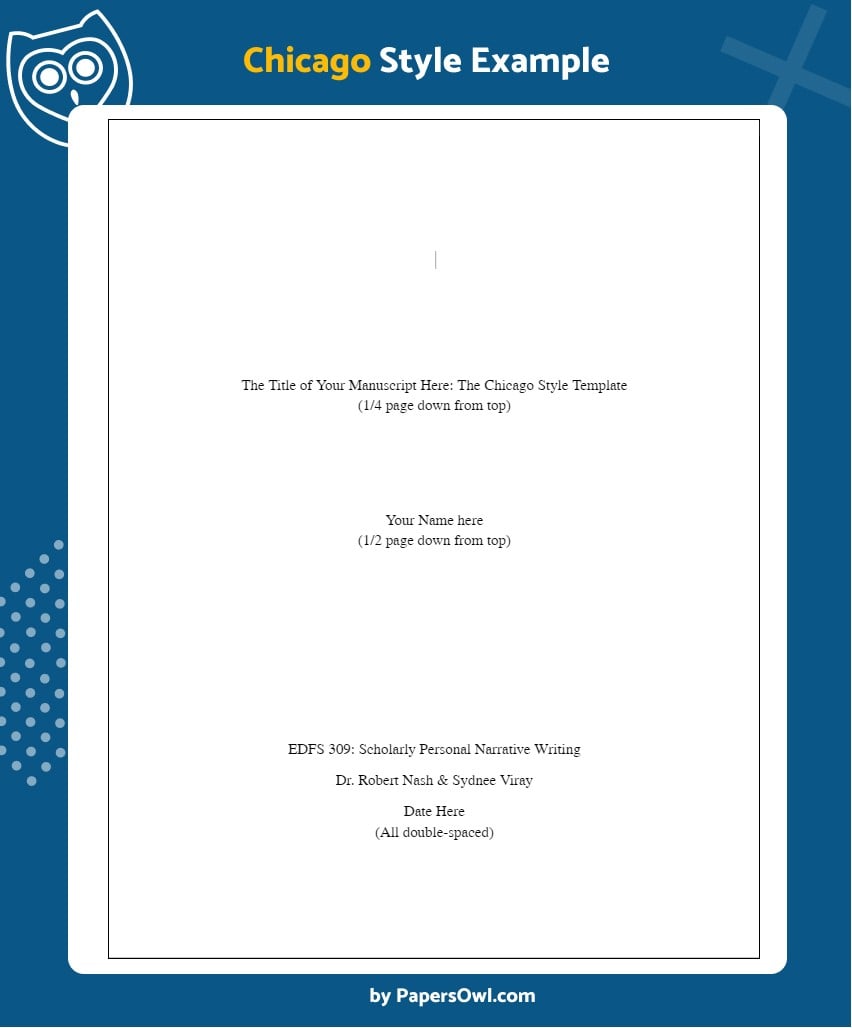
Citation Styles
Chicago style offers two citation methods: author-date and notes and bibliography. It is important to choose one method and use it consistently throughout your paper.
Author-Date Style:
- Include the author’s last name and publication year in parentheses within the text.
- Example: (Smith 2020)
Notes and Bibliography Style:
- Use footnotes or endnotes for citations within the text.
- Provide a bibliography at the end of the paper listing all sources.
Reference List or Bibliography
Regardless of the citation method chosen, a reference list or bibliography should be included at the end of the paper. Here are some formatting rules:
- List all referenced sources.
- Use double spacing and a hanging indent for each entry.
- For books, include the author’s name, publication date, title, publisher, and publication city.
- For journal articles, include the author’s name, article title, journal title, volume number, issue number, and page numbers.
- For online sources, include the URL and the date you accessed the information.
Other Important Details:
- When using the Chicago style, you may include a larger margin on some pages.
- Do not mix citation styles. Choose either author-date or notes and bibliography, and use it throughout your paper.
- Make sure all sources are cited correctly and included in your reference list or bibliography.
Using the Chicago style results in a well-organized and properly cited research paper. Always check the latest Chicago Manual of Style for the most accurate and up-to-date rules.
Take your paper to the next level
Professional editors will check your paper for grammar, punctuation, sentence structure, consistency, and academic style.
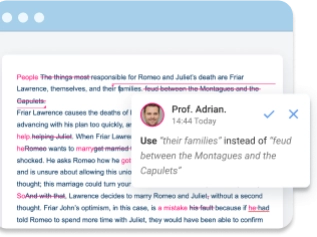
ASA Format Standards
Created by the American Sociological Association, this style is commonly used by sociological students. Let’s dive into this sociology research paper formatting outline, and see what are its key elements. This style is heavily influenced by APA and the main striking difference lies in the use of footnotes. Let’s analyse it in more detail.
Title Page
ASA style requires a separate title page including title, author’s name, and institutional affiliation. The elements are centered at the top of the page, and could also include extra information such as class and professor’s name or acknowledgements.
In-text Citations
In ASA style, in-text citations use the author’s last name and the publication year in parentheses (Smith 2022). When quoting directly, include page numbers like this (Smith 2022:45). Pay close attention to the subtle differences between ASA and MLA. If you are confident with one, make sure to closely check the general guidelines of the other.
References
The reference list is at the end of the research paper, as usual. Here, you can write all the sources you cited in the literature review and the rest of the paper. ASA employs a reference list at the end of the paper, providing detailed citations for all sources cited within your work. Entries should follow ASA guidelines meticulously, as they are pretty similar to other styles.
Footnotes
When you use ASA, you should put footnotes only to write additional content that could better explain something you wrote in the body. For example, to explain research methods. The sources, as mentioned, will be listed only at the end of the paper.
Headings
ASA uses a three-level system when it comes to heading. Each level of the research paper headings will be different. A first-level heading for a research paper is left-justified and all-capitalized. The second level is in italics and uses a title case. The third level only has the first word capitalized. For example:
- First: HOW TO WRITE AN INTRODUCTION
- Second: How to Write an Introduction
- Third: How to write an introduction
Use of “et al.”
ASA allows the use of et al. when citing sources with multiple authors (three or more). It simplifies citations by replacing lengthy lists of authors’ names with et al. (Smith et al. 2022).
URLs and DOIs
When citing online sources in ASA style, use a DOI whenever possible and rely on URLs as a second choice. Acting as a permalink, the DOI grants stability and persistent access to the source.
As for formatting, follow this example:
https://doi.org/xxxxxxx
Final Notes
Only research papers that are formatted flawlessly are accepted by reputable journals, whatever their thesis statement is. And if you consider that you can only rise through the academic ranks and file by the number of publications in such journals, the format for a research essay is crucial.
In this style guide on writing a research paper, we have gone through the four main types of paper formats, hoping to have succeeded in showing their differences and similarities. We have also emphasized how crucial it is to have an eye on the guidelines of your chosen style as you refine your paper.
Now it’s your turn, choose your style and write the research paper that will change your academic journey!




